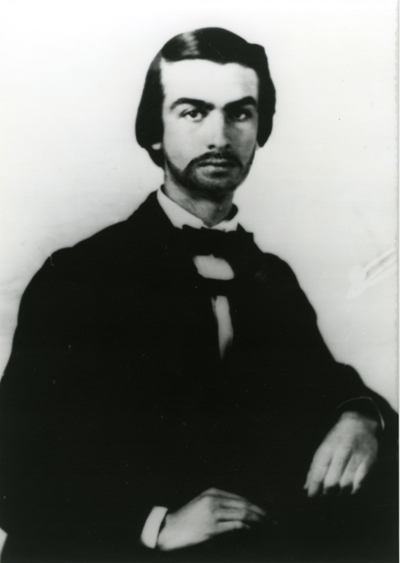Gilbert Elliot
Featured Character – 1864 Confederate
Decline

Gilbert
Elliot
Courtesy of the Museum of the Albemarle
Gilbert
Elliot came from a family
of shipbuilders. His
maternal
grandfather, Charles Grice, a Pennsylvania
native, built a large shipyard on the banks of the Pasquotank
River at
the present-day site of Elizabeth City.
Intending to enter the law profession, Elliot studied
under William
Francis Martin. Once
war broke out,
however, Elliott’s background in shipbuilding attracted the attention
of James
Green Martin, adjutant-general of North Carolina’s
troops and brother of William F.
Martin. Managing a
shipyard in Elizabeth City,
Elliot repaired and maintained
ships for the Confederate Mosquito Fleet.
The Union occupation of coastal North Carolina
forced him to abandon his work. Enlisting
in the reorganized 17th North
Carolina Infantry as a first lieutenant in May 1862, Elliot earned the
attention of Confederate Secretary of the Navy Stephen Mallory. Mallory asked him to
construct an ironclad
for the Confederate navy on the Roanoke
River. Given
two years leave from the Confederate
Army, Elliot selected a site near Edward’s Ferry, North Carolina
for his new shipyard. Over
the next two years, Elliot dealt with
labor shortages, supply shortages, and Confederate bureaucracy. Despite all odds, the ram
neared completion
in early 1864. Determined
to see the
newly commissioned Albemarle in action, Elliot volunteered as an
aide to James Wallace Cooke, the ram’s commander.
On the trip down the Roanoke River, Elliot
found a passage through Union obstructions and reconnoitered the
garrison at Plymouth. Following the successful
debut of Elliot’s Albemarle,
the Confederate Navy rewarded him with another contract for a larger
and more
powerful ironclad. After
the sinking of
the Albemarle by William B. Cushing and the recapture
of Plymouth
by
Federal forces, Cooke ordered the uncompleted ship burned to keep it
from
falling into enemy hands. On
April 13,
1865, Elliot married Lucy Ann Hill, daughter of a planter that lived
close to
the Edward’s Ferry shipyard. Although
the couple lived at Kenmore, the Hill family plantation, for a time, by
January
1867 Elliot formed a partnership with his brothers and opened a
wholesale
grocery in Norfolk. The partnership eventually
folded, with
Elliot later becoming a banker. In
1877,
the family moved to St. Louis,
where Elliot worked as a lawyer. By
1893, they moved again; this time to New York City.
Together with his son, Gilbert Elliot III, he opened
another law practice. Gilbert
Elliot died on May 9, 1895 in Staten Island, New York.